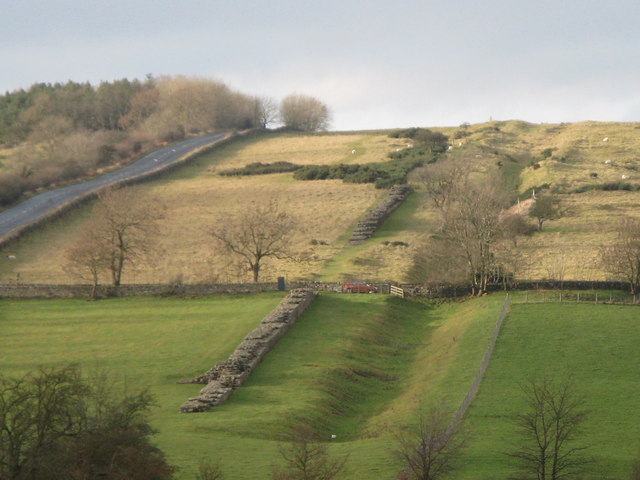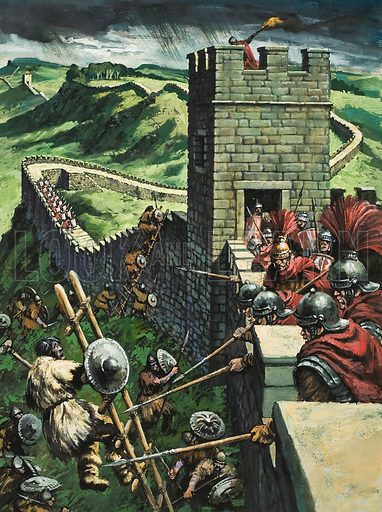For this blog, I visited Black Carts Turret on Hadrian’s Wall. When Hadrian’s Wall was originally constructed it didn’t have forts built into it. Instead, it was designed to have a series of Mile Castles and turrets to provide the defences for the Roman Empire. As the name suggests, those Mile Castles are positioned every Roman mile along the Wall.

Black Carts Turret
Today, those Mile Castles are numbered from east to west. There are also two turrets associated with each Mile Castle, which are referred to as A and B. The turret I’m at here, Black Carts Turret, is known as turret 29A because it’s closest to Mile Castle 29.
We know this turret would have been a two-storey building from the archaeological work that has taken place across Hadrian’s Wall, on the German frontier and in other parts of the Roman Empire.
Inside the turret
When it was excavated by the Northumbrian Archaeologist John Clayton, we know there was a hearth inside the turret. This would have been used to house a fire to keep the soldiers warm and as somewhere to cook their food. The soldiers would have slept downstairs in the turret too, to gain the benefit of the hearth. The upstairs would have been the location where the soldiers would have spent most of their time, during the day.

It would have had access to Hadrian’s Wall and would have been covered by a pitched roof. The soldiers would be stationed upstairs and look out to the north to keep an eye on what was going on to the north of the frontier. These buildings were an incredibly important part of the defence of the empire because, at any point in time, there could have been an assault on the Wall.
Attacks on the turret

In the event of an attack, the soldiers would have set off a signal. We have some ideas from Roman military writings, about how those signals would have worked and they would have lit a signal fire which would have been passed along the wall to alert troops from the local Roman forts to relieve the soldiers in the turrets and help them against the attack.
The first relief would probably have come from a local Mile Castle and if that wasn’t enough to overcome the assault, reinforcement troops would also come from the two local forts, Brocolitia to the west and Chesters Roman Fort to the east. Chesters would have had cavalry so they would arrive quickly, while the Brocolitia soldiers were infantry soldiers and would travel on foot. There were, however, around 480 soldiers arriving on foot, as fast as possible, as a reinforcement.
It was most likely a very boring posting here at Black Carts Turret. Assaults were unlikely and even if there were to be an assault, the wall ditch to the north of the Wall would stop any assaulters in their tracks. Anyone who made it to the wall would then have to scale the vallum behind the wall which would slow them enough for reinforcements to arrive. This made this turret a safe post to man. Like most soldiering, it’s 99% boredom and 1% sheer terror, panic and action.
You can watch the episode connected to this blog here on Youtube


